
UPDATE SEPTEMBER 1, 2016:
The release of Dark Souls III has finally answered this question. That game has rendered the speculation below completely moot and invalid. However, this post will remain preserved for posterity.
There is considerable debate within the Dark Souls fan base regarding whether or not Knight Solaire of Astora may be the forgotten son of Lord Gwyn, and the God of War. The game contains many references to a forgotten God of War, who was the son of Lord Gwyn, the God of Sunlight. The primary source for this is the item description for the Ring of the Sun's Firstborn:
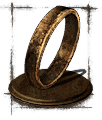
"Lord Gwyn's firstborn, who inherited the
sunlight, once wore this ancient ring.
Boosts the strength of miracles.
Lord Gwyn's firstborn was a god of war,
but his foolishness led to a loss of the
annals, and rescinding of his deific status.
Today, even his name is not known." The game doesn't specify what the God of War did to be stripped from the annals, but the blunder cost him dearly. As a punishment, Gwyn and the other gods rescinded the God of War's diefic status and expelled him from Anor Londo.
But it didn't end there. Based on the content of the game itself, it appears that the gods also removed all references to him. This included removing or destroying any statues depicting him and redacting his name from records. Both his name and face are lost to history, as is his fate. Was he cast out of Anor Londo? Was he made mortal? Was he cast out of the world, entirely?
The gods made an effort to eradicate all records and traces of the God of War.
Statues of him were removed or destroyed all throughout Anor Londo and Lordran.
If the Warriors of Sunlight covenant (lead by the God of War) existed prior to the God of War's expulsion from Anor Londo, then it would also stand to reason that the gods disbanded the covenant. It's highly unlikely that gods would have permitted the covenant to continue to function, since its followers would be able to continue to teach of the existence of the God of War. These followers would likely have been forced to renounce the covenant or become an underground cult. The fact that the covenant still exists and has followers is likely due to the waning influence of the gods after Gwyn left to link the flames and the gods were forced to abandon Anor Londo.
The Sunlight Medal does offer one clue as to the fate of the God of War and his covenant. It suggests that the forgotten god still lives, and still watches over his followers:
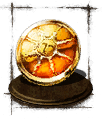
"This faintly warm medal engraved with the
symbol of the Sun, is the ultimate honor,
awarded to those who summon the Warrior
of Sunlight and complete a goal.
The symbol represents Lord Gwyn's firstborn,
who lost his deity status and was expunged
from the annals. But the old God of War
still watches closely over his warriors." In any case, we meet one NPC Warrior of Sunlight during the game: Solaire of Astora.
Solaire doesn't reveal much about himself. He is a Warrior of the Sunlight who has a strong reverence for the sun itself. In fact, he is on a possibly futile attempt to obtain his own "sun"... [More]
c468e0a8-487d-48c8-bd28-5fb3417fe068|3|4.7
Tags:Dark Souls, Dark Souls II, Solaire, Astora, God of War, Gwyn, Andre of Astora, Oscar of Astora, Sunlight Maggot, sun, Warrior of Sunlight, Lightning Spear, lightning, miracle, covenant, co-op, multiplayer, ring, armor, sword, lore, annals, Faraam, Nameless King
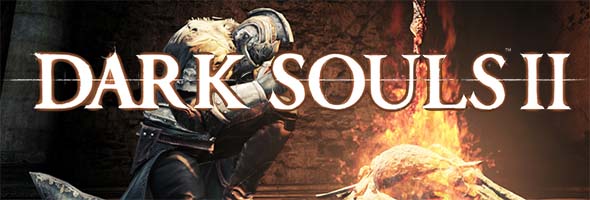
I recently posted my much-belated review of Dark Souls II. In it, I criticized the game for having lackluster online components, but didn't go into much detail other than to say that Soul Memory seems like a non-optimal matchmaking method and that invasions are rare and reserved for elite players. I wanted to take a moment to go over some of the other complaints that I have with the game's online mechanics, as well as to offer some suggestions for improving them. While it seems unlikely that From will make significant mechanical changes at the fundamental levels that I am about to propose, the fact that there is still at least one more DLC incoming means they have the opportunity to do so.
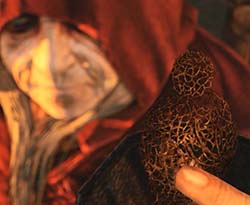
Human Effigies were too rare to be
the only means of revival.
When the game initially released, humanity could only be restored by consuming a Human Effigy. This mechanic was an interesting departure, since the previous games had both relied on defeating bosses as the primary way of reviving. The idea of requiring a consumable item to restore humanity wasn't exactly earth-shattering or fundamentally broken, but the specific implementation had one major flaw: Human Effigies were very rare, and there was no way to farm them!
This made deaths feel extremely punitive and proved unpopular with players and critics, and so From reversed their design and went back to granting revivals from boss kills.
After the 1.03 patch, maintaining your humanity has become almost trivial. This is mostly due to the fact that the White Soapstone can be placed anywhere in the level (including right outside a boss's fog gate), and that players can use the Small Soapstone to fully restore humanity by spending a couple minutes killing standard enemies. By using the Small Soapstone, you spend a few minutes in another player's world, and killing enemies shortens this duration. At the end, you are sent back to your own world with fully restored health, humanity, item condition, estus, and a small reward (usually a Smooth & Silky Stone).
Revival via the Small Soapstone makes it far too easy to keep your humanity. It requires only a minimal investment of time and effort, and you don't even have to beat a boss to fulfill it. This practically nullifies the cumulative loss of health from hollowing and makes it almost trivial to maintain humanity throughout most of the game.
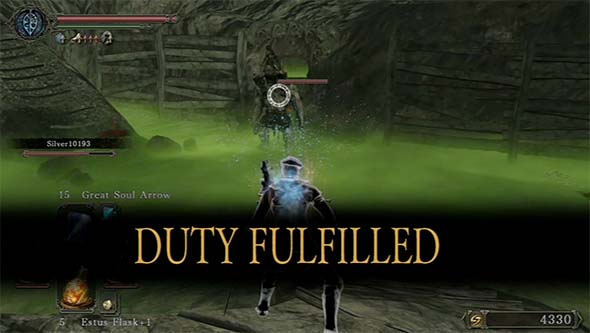
The Small White Soapstone can be used to easily restore full humanity - sometimes without any effort by the player!
Instead of full restoration, it should provide a partial restoration.
Fixing this imbalance seems easy enough: completing the Small Soapstone task should only partially restore the player's humanity. Instead of a full restore, the player's max HP could be restored equivalent to a single death... [More]
7a1f7437-6f97-409e-aacb-9ef8e2f0c931|0|.0
Tags:Dark Souls II, Dark Souls, From Software, Namco/Bandai, online, multiplayer, co-op, summon, PvP, soul memory, invasion, phantom, shade, black phantom, red phantom, white phantom, blue phantom, gold phantom, covenant, soapstone, Cracked Red Eye Orb, Cracked Blue Eye Orb, Human Effigy, Chariot Executioner, Old Monk
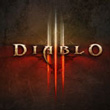
Recently came across Toronto-based software engineer Alex Curelea's blog, in which he describes the psychology behind why Diablo III may not be as satisfying as Diablo II was. It was a good read, and very quick too.
In the analysis, he compares Diablo fans to monkeys who are rewarded with flavored juice when they pull a lever after a specific sequence of shapes is displayed on screen. Eventually, the monkeys begin to associate the reward with the sequence of shapes, and the reward center of their brain becomes stimulated when the sequence appears, rather than when the actual reward is given later.
[More]
923a398b-9e30-4aa4-a63f-d71fc3ae8dfd|1|5.0
Tags:Diablo, Diablo II, Diablo III, Blizzard, Alex Curelea, psychology, Demon's Souls, Dark Souls, Skyrim, Bethesda, From Software, RPG
|

| 12 | | | | | | | 60 | | 11 | | | | | | | 55 | | 10 | | | | | | | 50 | | 09 | | | | | | | 45 | | 08 | | | | | | | 40 | | 07 | | | | | | | 35 | | 06 | | | | | | | 30 | | 05 | | | | | | | 25 | | 04 | | | | | | | 20 | | 03 | | | | | | | 15 | | 02 | | | | | | | 10 | | 01 | | | | | | | 05 |
|